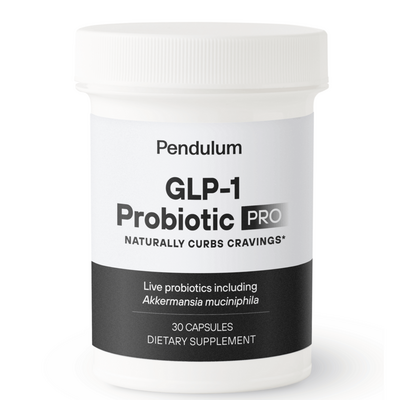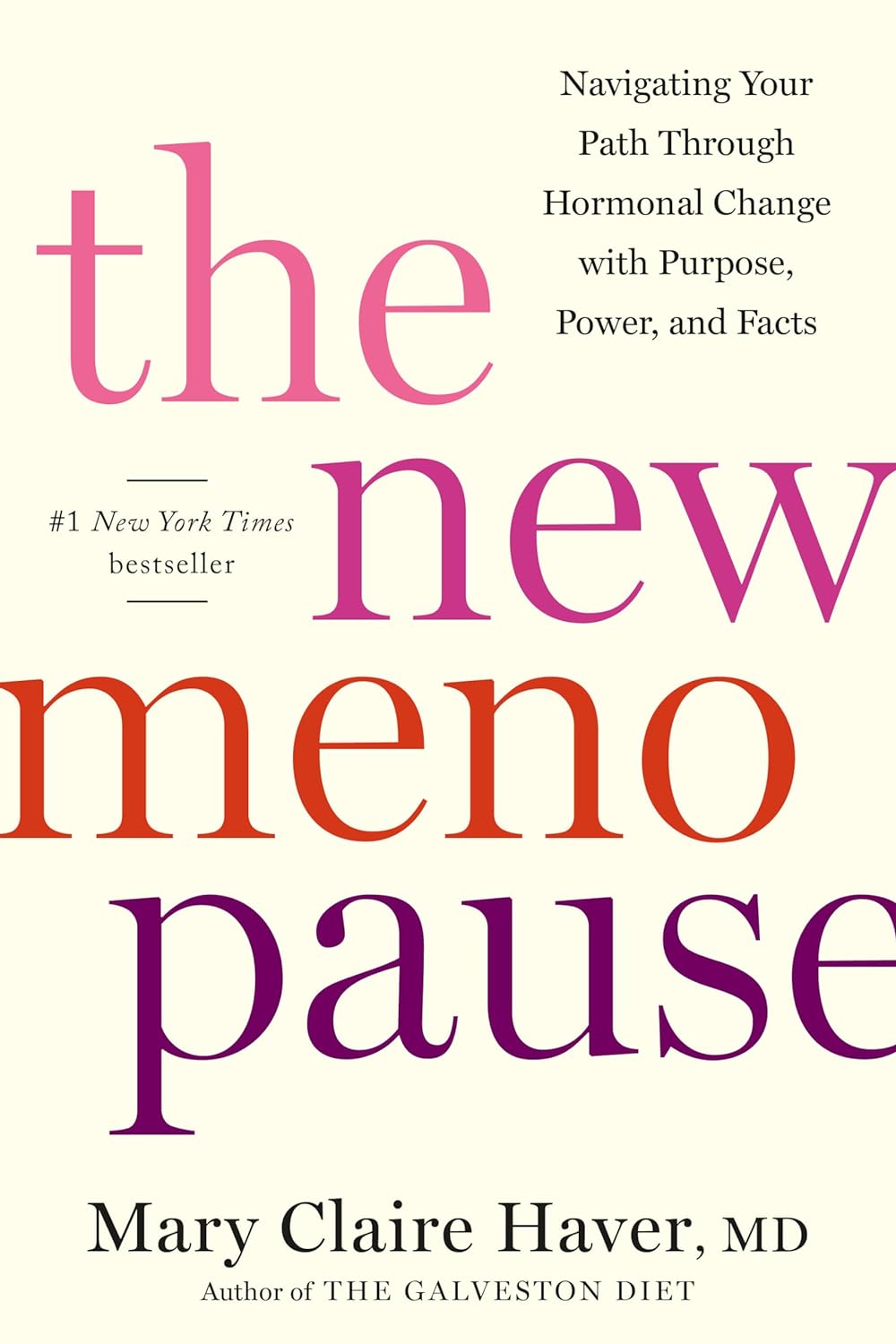COVID-19 Testing FAQs
(Updated December 21, 2020)
For an up-to-date list of COVID-19 tests authorized to be used during the COVID-19 pandemic, in laboratories and in patient-care areas, see https://www.fda.gov/medical-devices/coronavirus-disease-2019-covid-19-emergency-use-authorizations-medical-devices/vitro-diagnostics-euas
Emergency Use Authorization (EUA) testing options for COVID-19 infections are rapidly evolving. A variety of healthcare professionals are involved in testing including nurses, prescribers, pharmacists, etc. Some tests identify active infection. Other tests look for the body’s immune response to the virus, to identify people who have been infected with SARS-CoV-2 in the past. The chart below answers common questions about COVID-19 testing, including how to safely participate in testing, interpret test results, and communicate test results to patients.
Abbreviations: CLIA = Clinical Laboratory Improvement Amendments EUA = emergency use authorization; FDA = Food and Drug Administration; NPV = negative predictive value; PPV = positive predictive value; SARS-CoV-2 = coronavirus that causes COVID-19 infections.
| Question |
Answer/Pertinent Information |
||||||||
| What is emergency use authorization? | EUA is a process through the FDA to allow use of unapproved medical products or unapproved uses of approved products during an emergency to diagnose, treat, or prevent serious or life-threatening conditions when there are no approved alternatives available.2 A regularly updated list of diagnostic and antibody tests for COVID-19 can be found at: https://www.fda.gov/medical-devices/coronavirus-disease-2019-covid-19-emergency-use-authorizations-medical-devices/vitro-diagnostics-euas. This list provides helpful information including:2
COVID-19 EUAs are only valid during the COVID-19 public health emergency (i.e., they are no longer valid after the public health emergency is terminated).3 The FDA suggests the following minimum specifications for EUA test approval:15,33,b
|
||||||||
| What do the different COVID-19 tests detect? | Serology tests (uses a blood specimen) detect the body’s immune response (e.g., IgG [late], IgM [early], virus-specific antibody) to SARS-CoV-2.1 Examples of EUA-approved serology COVID-19 tests include SARS-CoV-2 IgG Assay and Elecsys Anti-SARS-CoV-2.
Molecular or PCR tests (uses a respiratory specimen) detect genetic material (e.g., nucleic acid) from SARS-CoV-2. Examples of EUA-approved molecular or PCR COVID-19 tests include ID Now COVID-19 and Accula SARS-CoV-2. Antigen tests (uses a respiratory specimen) detect protein antigens from SARS-CoV-2. Only molecular (PCR) or antigen tests, along with exposure risk and patient symptoms, should be used to identify active COVID-19 infections.4 However, a negative Sofia SARS-2 Antigen FIA result may not rule out an active COVID-19 infection. If patients have positive exposure and/or symptoms, confirm negative Sofia SARS-2 Antigen FIA results with a follow-up molecular test.17 The role for serology (antibody) tests is still evolving. Antibody tests are generally not recommend to diagnose acute COVID-19 infections.4 Possible uses for antibody tests may include evaluating patients with a high suspicion for COVID-19 when molecular testing is negative and at least two weeks have passed since symptom onset; assessment of multisystem inflammatory syndrome; and collecting surveillance data.35 |
||||||||
| Who should be tested for COVID-19 infection? | Symptoms of COVID-19 infection may include fever, cough, shortness of breath, fatigue, chills, muscle pain or body aches, new loss of taste or smell, nausea or vomiting, diarrhea, congested or runny nose, and/or sore throat.14
Follow state and local health department guidance on testing for active COVID-19 infection (e.g., molecular, antigen).
Some organizations may mandate testing of larger groups, regardless of exposure (e.g., employers, colleges/universities). If patients test positive, avoid retesting to see if the virus has cleared. Patients can remain positive for weeks to months.30,32 Patients are not considered contagious as long as they meet the criteria outlined in the “What should patients be told about how long to continue isolation procedures?” row. Serology (antibody) tests are being used for COVID-19 surveillance.27 In addition, some experts suggest a possible role in evaluating patients with a high suspicion for COVID-19 when molecular testing is negative and at least two weeks have passed since symptom onset, and for assessment of multisystem inflammatory syndrome.35 Follow state/local guidance for serology testing. |
||||||||
| When should patients be tested for active infection after suspected exposure to SARS-CoV-2? | Exact time frames for testing are not clearly defined. Use these principles to help determine if testing is appropriate:
|
||||||||
| How do sensitivity and specificity impact test results and predictive values? | No test is 100% sensitive, specific, or predictive. All tests can give false negative and false positive results.1
To accurately interpret test results, it is important to know the particular test’s sensitivity (sometimes called positive percent agreement) and specificity (sometimes called negative percent agreement) often found in product information.b
To accurately interpret test results, it is important to understand PPV and NPV.
PPV and NPV are influenced by prevalence. As the prevalence of the infection increases, PPV increases and NPV decreases. Similarly, as the prevalence of the infection decreases the PPV decreases and NPV increases.11 The FDA has a calculator (https://www.fda.gov/media/137612/download) available to calculate PPV and NPV using a particular test’s sensitivity and specificity. |
||||||||
| How are positive and negative predictive values calculated? | Patient’s True COVID-19 Status |
||||||||
| Positive | Negative | ||||||||
| COVID-19 Test Result | Positive | 88 |
4 | Total = 88 + 4 = 92 | PPV10 = 88/92 = 95.6% | ||||
| Negative | 12 | 96 |
Total = 12 + 96 = 108 | NPV10 = 96/108 = 88% | |||||
| Total = 88 + 12 = 100 | Total = 4 + 96 = 100 | Total = 100 + 100 OR 92 + 108 = 200 | |||||||
| Sensitivity9 = 88/100 = 88% | Specificity9 = 96/100 = 96% | ||||||||
| How should COVID-19 test results be interpreted? | Type of Test6 | Test Result6 | Interpretation6 | ||||||
| Viral testing (e.g., molecular or PCR, antigen) (looking for an active infection) |
Positive |
Most likely has a current infection |
|||||||
| Negative |
Most likely does NOT have a current infection |
||||||||
| Antibody testing (e.g., serology) (looking for a previous infection) |
Positive |
Possibly had a recent infection | |||||||
| Negative |
Likely has not had a recent infection |
||||||||
| Viral AND antibody testing (looking for an active or previous infection) |
Virus (positive) Antibody (positive) |
Most likely has a current infection |
|||||||
| Virus (positive) Antibody (negative) |
Most likely has a current infection |
||||||||
| Virus (negative) Antibody (positive) |
Possibly had and recovered from an infection |
||||||||
| Virus (negative) Antibody (negative) |
Likely has not had a recent infection |
||||||||
| What to consider after a negative COVID-19 viral test? | Is the patient symptomatic? Consider retesting using a molecular test if symptoms persist or worsen.
What type of test was used? Antigen tests may lead to false negatives more often than molecular tests.17 When was the sample taken and was the sample taken properly? Testing too early after exposure or without a properly obtained sample can lead to false negative results. Tell patients to quarantine for 14 days after contact with someone with confirmed COVID-19, even after a negative test.34 |
||||||||
| How should COVID-19 test results be reported and communicated? | Follow policies and procedures for reporting positive and negative test results to patients, prescribers, and local and state health departments. Required information to be collected and reported (along with timelines) can be found at https://www.hhs.gov/sites/default/files/covid-19-laboratory-data-reporting-guidance.pdf.23,24
Regardless of results and the type of test, advise patients to use preventive measures to protect themselves and others.26 For all patients with symptoms OR anyone whose test result indicates they most likely have a current infection, discuss symptom management (e.g., fluids, acetaminophen or ibuprofen for fever). Advise patients to:
Have a follow-up system to ensure referrals are complete, symptoms are improving, or assess med tolerability. For patients whose test indicates they most likely have a current infection (see test interpretation above) they should:13
For patients whose tests indicate they most likely do NOT have a current infection:
For patients whose tests indicates they possibly had a previous infection, but most likely do NOT have an acute infection:
For patients whose tests indicates they likely NEVER had an infection:
|
||||||||
| What should patients be told about how long to continue isolation procedures? | For patients with a positive test for acute infection and who experienced COVID-19 symptoms, isolation procedures can be stopped after:4,13
For patients with a positive test for acute infection who did NOT experience any COVID-19 symptoms prior to testing, isolation procedures can be stopped after:13
|
||||||||
| What should be done to protect staff administering COVID-19 tests? | Follow facility policies and procedures and ensure anyone participating in testing is properly trained on specific testing activities that they will be involved in. Examples of these activities could include:
Wear proper PPE (varies based on collection method) to protect yourself and patients when testing for COVID-19.8 To collect respiratory specimens (e.g., nasopharyngeal) for molecular (PCR) or antigen COVID-19 testing use PPE:8
Follow facility policies for when it is appropriate to reuse PPE, based on specific products being used and the status of PPE shortages. Whenever possible, reusable PPE should be cleaned and disinfected (according to manufacturer instructions) prior to reuse.8 |
||||||||
| What respiratory collection methods can be used for COVID-19 viral testing? | Proper respiratory specimen collection is important to reduce the chance of false negative test results.18 Specific descriptions for specimen collection by collection method can be found at https://www.cdc.gov/coronavirus/2019-ncov/lab/guidelines-clinical-specimens.html. | ||||||||
| Collection Method18 | Who Collects18 | Collection Tool18 | Comments18 | ||||||
| Nasopharyngeal (NP) or oropharyngeal (OP) | Healthcare provider | Synthetic fiber swab with plastic or wire shaft | AVOID calcium alginate swabs or swabs with wooden shafts due to possible virus inactivation and inhibiting PCR testing.
NP collection recommended over OP. If both NP and OP swabs are collected, combine into one tube for testing. |
||||||
| Nasal mid-turbinate swab | Healthcare provider or supervised onsite (not at home) self-collectionc | Flocked tapered swab | |||||||
| Nasal swab | Healthcare provider, home or supervised onsite self-collectionc | Flocked or spun polyester swab | |||||||
| Nasal or nasopharyngeal wash/aspirate | Healthcare provider | Catheter and suction apparatus | |||||||
| Sputum | Supervised onsite (not at home) self-collectionc | Sterile, leak-proof, screw-cap, cup or sterile dry container | Can be used for patients with a productive cough.
Sputum induction not recommended. Patients should rinse mouth with water prior to collecting. Instruct patients to expectorate deep cough sputum. |
||||||
| Lower respiratory tract aspirate or bronchoalveolar lavage | Healthcare provider | Sterile, leak-proof, screw-cap sputum collection cup or sterile dry container | Can be used for hospitalized patients receiving mechanical ventilation
Often not obtained because of concerns about aerosolization of virus during sample collection.25 |
||||||
| Saliva | Self or supervised at-home collection | Per the specific test’s instructions; including eating/drinking restrictions | |||||||
| When are home-collection samples permitted with COVID-19 tests? | Some COVID-19 tests may permit home collection using specific collection kits for nasal swabs or saliva samples with subsequent testing at labs that are CLIA-certified to perform high-complexity tests.7,19-21,31
To identify which EUA COVID-19 tests are approved to use home-collection samples for testing, look for the words “home collection” in the attribute’s column of the individual EUA tables for each type of test (i.e., molecular, antigen, serology) at https://www.fda.gov/medical-devices/coronavirus-disease-2019-covid-19-emergency-use-authorizations-medical-devices/vitro-diagnostics-euas. At the time of publication, there are not any serology (antibody) tests with an EUA for sample collection at home. |
||||||||
| Can COVID-19 testing be completed at home? | To identify which EUA COVID-19 tests are approved to be completed at home, look for the words “home testing” in the “attributes” or “diagnostic and date EUA originally issued” columns of the individual EUA tables for each type of test (i.e., molecular, antigen, serology) at https://www.fda.gov/medical-devices/coronavirus-disease-2019-covid-19-emergency-use-authorizations-medical-devices/vitro-diagnostics-euas.
At the time of publication, there are a few EUA-approved viral COVID-19 tests that can be completed at home.7 See our chart, COVID-19 Point-of-Care Testing, for details about these tests including how quickly results are available and other testing tips . Discourage use of COVID-19 tests that do not have EUA approval. Though it may be possible for patients to purchase other, non-EUA-approved tests for home use, warn patients of the risks:22
|
||||||||
- At the time of publication only certain molecular (PCR), antigen, and serology (antibody) tests have EUA approval for testing in patient care settings under a CLIA waiver or for testing at home.7
- When a test is evaluated compared to a non-reference standard, true sensitivity and specificity cannot be calculated. These comparisons are called positive percent agreement and negative percent agreement, instead of sensitivity and specificity.16
- FDA issued guidance advising healthcare providers to provide clear, step-by-step instructions when patients are performing supervised self-collection in order to increase the chance that an adequate sample is obtained, thus limiting any impact on a test’s sensitivity.36
- Centers for Medicare & Medicaid (CMS) released a quick-start guide to streamline the CLIA-waiver certification process for labs conducting testing for COVID-19.37 The quick-start guide can be found at https://www.cms.gov/files/document/laboratory-quick-start-guide-cms-clia-certification.pdf.
Project Leader in preparation of this clinical resource (360601): Beth Bryant, Pharm.D., BCPS, Assistant Editor; Last modified December 21, 2020.
References
- FDA. EUA authorized serology test performance. October 9, 2020. https://www.fda.gov/medical-devices/emergency-situations-medical-devices/eua-authorized-serology-test-performance. (Accessed October 13, 2020).
- FDA. Emergency use authorization. September 22, 2020. https://www.fda.gov/emergency-preparedness-and-response/mcm-legal-regulatory-and-policy-framework/emergency-use-authorization. (Accessed September 22, 2020).
- FDA. FAQs on emergency use authorizations (EUAs) for medical devices during the COVID-19 pandemic. August 18, 2020. https://www.fda.gov/medical-devices/emergency-situations-medical-devices/faqs-emergency-use-authorizations-euas-medical-devices-during-covid-19-pandemic. (Accessed September 4, 2020).
- CDC. Coronavirus disease 2019 (COVID-19): overview of testing for SARS-CoV-2 (COVID-19). September 18, 2020. https://www.cdc.gov/coronavirus/2019-ncov/hcp/testing-overview.html. (Accessed September 18, 2020).
- CDC. Coronavirus disease 2019 (COVID-19): serology testing for COVID-19 at CDC. May 23, 2020. https://www.cdc.gov/coronavirus/2019-ncov/lab/serology-testing.html. (Accessed September 4, 2020).
- White House. Guidance on interpreting COVID-19 test results. https://www.whitehouse.gov/wp-content/uploads/2020/05/Testing-Guidance.pdf. (Accessed September 4, 2020).
- FDA. Coronavirus disease 2019 (COVID-19) emergency use authorizations for medical devices: In vitro diagnostic EUAs. December 15, 2020. https://www.fda.gov/medical-devices/coronavirus-disease-2019-covid-19-emergency-use-authorizations-medical-devices/vitro-diagnostics-euas. (Accessed December 16, 2020).
- CDC. Coronavirus disease 2019 (COVID-19). Interim infection prevention and control recommendations for healthcare personnel during the coronavirus disease 2019 (COVID-19) pandemic. July 15, 2020. https://www.cdc.gov/coronavirus/2019-ncov/hcp/infection-control-recommendations.html?CDC_AA_refVal=https%3A%2F%2Fwww.cdc.gov%2Fcoronavirus%2F2019-ncov%2Finfection-control%2Fcontrol-recommendations.html. (Accessed September 22, 2020).
- Open Anesthesia. Sensitivity and specificity definition. https://www.openanesthesia.org/definition_sensitivity_and_specificity/. (Accessed September 4, 2020).
- Boston University School of Public Health. Positive and negative predictive value. July 5, 2020. http://sphweb.bumc.bu.edu/otlt/MPH-Modules/EP/EP713_Screening/EP713_Screening5.html. (Accessed September 4, 2020).
- Tenny S. Hoffman MR. Prevalence. StatPearls [Internet]. Updated July 10, 2020. https://www.ncbi.nlm.nih.gov/books/NBK430867/. (Accessed September 4, 2020).
- CDC. Coronavirus disease 2019 (COVID-19). Testing for past infection. June 30, 2020. https://www.cdc.gov/coronavirus/2019-ncov/testing/serology-overview.html. (Accessed September 4, 2020).
- CDC. Coronavirus disease 2019 (COVID-19). What to do if you are sick. September 11, 2020. https://www.cdc.gov/coronavirus/2019-ncov/if-you-are-sick/steps-when-sick.html. (Accessed September 18, 2020).
- CDC. Coronavirus disease 2019 (COVID-19): symptoms of coronavirus. May 13, 2020. https://www.cdc.gov/coronavirus/2019-ncov/symptoms-testing/symptoms.html. (Accessed September 4, 2020).
- FDA. FAQs on testing for SARS-CoV-2. Updated September 22, 2020. https://www.fda.gov/medical-devices/coronavirus-covid-19-and-medical-devices/faqs-testing-sars-cov-2#validation. (Accessed September 22, 2020).
- FDA. Guidance for industry and FDA staff: statistical guidance on reporting results from studies evaluating diagnostic tests. March 2007. https://www.fda.gov/media/71147/download. (Accessed September 4, 2020).
- Product information for Sofia 2 SARS Antigen FIA. Quidel. San Diego, CA 92121. August 2020.
- CDC. Coronavirus Disease 2019 (COVID-19): interim guidelines for collecting, handling, and testing clinical specimens from persons for COVID-19. Updated July 8, 2020. https://www.cdc.gov/coronavirus/2019-ncov/lab/guidelines-clinical-specimens.html. (Accessed September 4, 2020).
- FDA. FDA news release: Coronavirus (COVID-19) update: FDA authorizes first standalone at -home sample collection kit that can be used with certain authorized tests. May 16, 2020. https://www.fda.gov/news-events/press-announcements/coronavirus-covid-19-update-fda-authorizes-first-standalone-home-sample-collection-kit-can-be-used. (Accessed September 4, 2020).
- FDA. FDA news release: Coronavirus (COVID-19) update: FDA authorizes first test for patient at-home sample collection. April 21, 2020. https://www.fda.gov/news-events/press-announcements/coronavirus-covid-19-update-fda-authorizes-first-test-patient-home-sample-collection. (Accessed September 4, 2020).
- FDA. FDA news release: Coronavirus (COVID-19) update: FDA authorizes first diagnostic test using at-home collection of saliva specimens. May 8, 2020. https://www.fda.gov/news-events/press-announcements/coronavirus-covid-19-update-fda-authorizes-first-diagnostic-test-using-home-collection-saliva. (Accessed September 4, 2020).
- Regalado A, Patel NV. MIT technology review: the race is on for a covid-19 test you can take at home. May 20, 2020. https://www.technologyreview.com/2020/05/20/1001987/race-home-testing-covid-19-crispr-mammoth-biosciences-gsk/. (Accessed September 4, 2020).
- HHS. COVID-19 pandemic response, laboratory data reporting: CARES Act section 18115. June 4, 2020. https://www.hhs.gov/sites/default/files/covid-19-laboratory-data-reporting-guidance.pdf. (Accessed September 11, 2020).
- HHS. Frequently asked questions: laboratory data reporting for COVID-19 testing. https://www.hhs.gov/sites/default/files/laboratory-data-reporting-for-covid-19-testing-faqs.pdf. (Accessed September 4, 2020).
- NIH. COVID-19 treatment guidelines: testing for SARS-CoV-2 infection. June 11, 2020. https://www.covid19treatmentguidelines.nih.gov/overview/sars-cov-2-testing/. (Accessed September 4, 2020).
- CDC. Coronavirus disease 2019 (COVID-19): COVID-19 testing overview. August 24, 2020. https://www.cdc.gov/coronavirus/2019-ncov/symptoms-testing/testing.html. (Accessed September 4, 2020).
- CDC. Coronavirus disease 2019 (COVID-19): COVID-19 serology surveillance. July 21, 2020. https://www.cdc.gov/coronavirus/2019-ncov/covid-data/serology.html. (Accessed September 4, 2020).
- University of Nebraska Medical Center. Nebraska medicine SARS-CoV-2 (COVID-19) testing recommendations. August 13, 2020. https://www.nebraskamed.com/sites/default/files/documents/covid-19/covid-testing-guidance.pdf. (Accessed September 4, 2020).
- CDC. Coronavirus disease 2019 (COVID-19): test for current infection. August 24, 2020. https://www.cdc.gov/coronavirus/2019-ncov/testing/diagnostic-testing.html. (Accessed September 4, 2020).
- Sethuraman N, Jeremiah SS, Ryo A. Interpreting diagnostic tests for SARS-CoV-2. JAMA 2020;23:2249-51.
- Acosta G. Albertsons rolls out at-home COVID-19 test kits in select markets. September 10, 2020. https://drugstorenews.com/albertsons-rolls-out-home-covid-19-test-kits-select-markets?utm_source=omeda&utm_medium=email&utm_campaign=NL_DSN+AM&utm_keyword=&oly_enc_id=3004A1595689H1W. (Accessed September 15, 2020).
- CDC. When you can be around others after you had or likely had COVID-19. September 10, 2020. https://www.cdc.gov/coronavirus/2019-ncov/if-you-are-sick/end-home-isolation.html. (Accessed September 18, 2020).
- FDA. Policy for Coronavirus disease-2019 tests during the public health emergency (revised): immediately in effect guidance for clinical laboratories, commercial manufacturers, and Food and Drug Administration staff. May 11, 2020. https://www.fda.gov/media/135659/download. (Accessed September 9, 2020).
- CDC. Coronavirus disease 2019 (COVID-19). When to quarantine. September 10, 2020. https://www.cdc.gov/coronavirus/2019-ncov/if-you-are-sick/quarantine.html. (Accessed September 15, 2020).
- Infectious Diseases Society of America. Infectious Diseases Society of America guidelines on the diagnosis of COVID-19: serologic testing. August 18, 2020. https://www.idsociety.org/COVID19guidelines/serology. (Accessed October 6, 2020).
- FDA. Recommendations on providing clear instructions to patients who self-collect an anterior nares (nasal) sample in a health care setting for SARS-CoV-2 testing – letter to health care providers. October 7, 2020. https://www.fda.gov/medical-devices/letters-health-care-providers/recommendations-providing-clear-instructions-patients-who-self-collect-anterior-nares-nasal-sample. (Accessed October 8, 2020).
- Centers for Medicare & Medicaid Services. CMS releases new tools to streamline certification for labs testing for COVID-19. September 25, 2020. https://www.cms.gov/newsroom/press-releases/cms-releases-new-tools-streamline-certification-labs-testing-covid-19. (Accessed October 8, 2020).
Clinical Resource, COVID-19 Testing FAQs. Pharmacist’s Letter/Prescriber’s Letter. June 2020.








